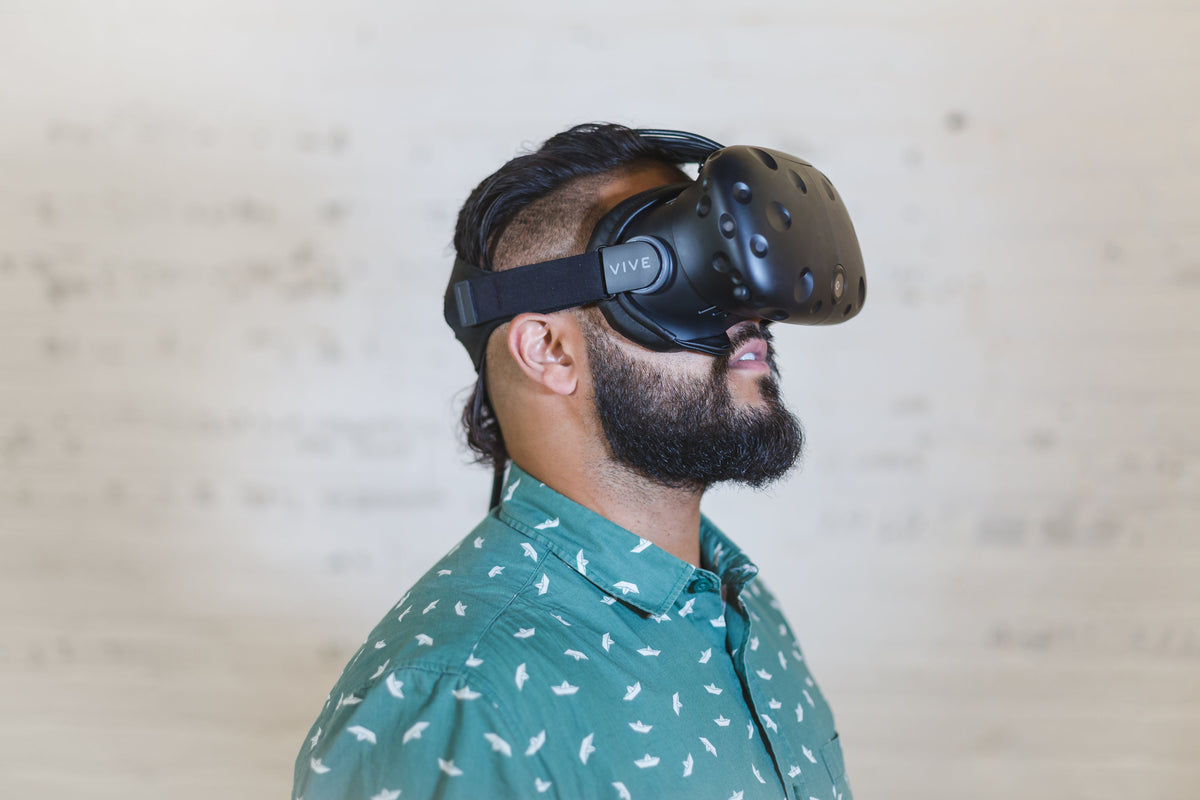

In the digital age, grief often unfolds online. Nearly half of U.S. adults have used online resources to cope with the death of a loved one, turning to memorial websites, social media and interactive guestbooks to share memories and receive support. As technology evolves, virtual reality (VR) has emerged as the next frontier in digital memorialization, allowing people to step into three‑dimensional worlds filled with sights and sounds associated with the deceased.
Digital tributes began in the early days of the internet as simple memorial pages listing biographical details and guestbooks where visitors could sign their names. With the advent of social media, memorials became more collaborative: friends could post photos and stories, share music playlists and express condolences on the deceased’s profile. Algorithms now prompt us to “remember” birthdays and anniversaries or resurface memories from previous years. These online spaces allow grief to be shared widely, but they remain two‑dimensional. VR takes digital grief a step further by surrounding participants with an environment that can evoke sensory memories, making the experience more immersive.
In a VR memorial, participants wear a headset and enter a space that might resemble a favourite hiking trail, a living room or a fantastical landscape filled with the person’s favourite music and colors. Industry observers describe new services that host virtual funeral ceremonies, interactive tributes and digital gravesites. Attendees can gather as avatars and explore a timeline of photos or videos by clicking on objects. Virtual headstones can be engraved with messages that play audio recordings when touched. Mourners can leave digital flowers, candles or written tributes at these sites, replicating rituals from physical cemeteries. VR even allows people to “visit” locations important to the deceased, such as a childhood home or a treasured vacation spot.
The appeal of VR memorials lies in their accessibility and emotional depth. People who cannot travel because of distance or illness can still attend a service through a headset, which proved invaluable during pandemic restrictions. Time zones become irrelevant—friends across continents can gather simultaneously. Beyond convenience, the immersive nature of VR can evoke powerful memories. Being surrounded by an environment reminiscent of the person—hearing their favourite song, walking through a digital garden—can trigger catharsis. Interactive stories and soundscapes engage participants more fully than static images; research suggests that immersive experiences help mourners connect with memories on a deeper level.
Personalization is another benefit. Traditional funerals are bound by cultural conventions, but VR memorials can be tailored to reflect the person’s passions: a concert hall for a musician or a kitchen for a chef. Families can incorporate digital art, voice recordings and 360‑degree video to tell a life story. Some providers even create virtual tours of significant places, allowing mourners to share in those experiences. Because VR spaces are modular, multiple rooms can be created—one focusing on childhood, another on achievements, another for messages from friends. Mourners can choose their path through the environment, customizing their experience.
Despite these advantages, there are challenges. Headsets and powerful computers may be expensive, and some mourners experience motion sickness. The immersive nature of VR may intensify grief, raising ethical questions about recreating a person’s likeness or voice. Designers must balance interactivity with respect, and families should consider whether older relatives are comfortable with the technology. Cultural differences also influence acceptance; in some traditions, physical presence and ritual are essential, and digital representations may feel impersonal.
Data and privacy are other concerns. VR experiences rely on cloud storage and software platforms, raising questions about who owns the digital assets and how long they will be accessible. Families should review terms of service to ensure personal recordings and photos are protected. Longevity is another issue. Unlike a printed photo album that can be handed down for generations, a VR experience may become incompatible with future hardware. Planning for long‑term access might involve exporting content to new formats or partnering with companies that guarantee preservation.
Planning a VR memorial begins with discussing whether such a tribute aligns with personal and cultural values. If it does, families can work with digital memorial companies to design the environment and gather content. The process of selecting photos, recordings and places can be healing in itself. Once created, the experience can be used during a scheduled service or shared privately with invited guests. Because VR memorials are digital, they can be revisited on anniversaries or birthdays, providing an ongoing place of reflection. They can also complement physical rituals; a family might plant a tree or scatter ashes and later gather online to share memories in the virtual space.
VR memorials also raise questions about digital legacy. Modern lives leave behind social media accounts and email archives as well as physical possessions. Families should decide who will manage these accounts, whether pages should be memorialized or removed, and how personal data will be stored. Adding a VR environment to this mix means deciding who controls it, who pays for hosting and how long it remains accessible. Including these questions in estate planning ensures that digital tributes reflect the person’s wishes and reduce future confusion.
Another layer to consider is community access. Younger generations may embrace VR memorials enthusiastically, but older family members might prefer to participate through simpler technologies such as live‑streamed services on a tablet or phone. Hybrid memorials that combine VR, video and in‑person gatherings can accommodate a wider range of participants. Open communication about expectations and options can help families avoid feelings of exclusion while still embracing new possibilities.
As technology evolves, VR memorials may become more affordable and intuitive. Future headsets will likely be lighter and cheaper, and augmented reality might overlay digital memories onto physical spaces. Artificial intelligence could curate tributes by analysing photos and posts. These developments will require ongoing ethical discussions, yet they offer new opportunities to tell stories in creative ways. Ultimately, VR memorials are not a replacement for traditional rituals but an addition to the repertoire of remembrance. Used thoughtfully and respectfully, they provide a unique, accessible way to honor a life and comfort the living.
FAQs
What are the shipping options for my memorial?
Oaktree offers free nationwide shipping on all urns and cremation jewelry items, with delivery typically taking 2-5 business days, including processing time. Need it sooner? Expedited shipping (overnight or 2-day) is available at checkout for an additional cost, and we will also prioritize processing for faster delivery. If you need international shipping, please contact us first to confirm availability and rates.
How long will it take for my engraved item to arrive?
Engraved urns and cremation necklaces require an additional 1-3 business days for personalization before shipping. If you need faster delivery, please contact us—we’ll do our best to expedite processing and accommodate your timeline. Expedited shipping options are also available at checkout to ensure your memorial arrives as soon as possible.
What do I do if I never received my order?
If your order hasn’t arrived within 10 business days, please contact us so we can track your shipment and resolve any issues. We’ll ensure your memorial reaches you as soon as possible.
What do I do if I received a defective order?
If your order arrives damaged or defective, contact us right away. We take pride in our high-quality craftsmanship and will work quickly to replace or repair your item at no additional cost.
Can I return my urn or cremation necklace? What is your return policy?
Oaktree offers a 100-day return and exchange policy for non-engraved items. Due to personalization, engraved urns are final sale and cannot be returned. For full details on how to start a return or exchange, visit our Returns & Exchanges page.
How do I make changes to an urn I’ve already ordered?
If you need to modify an order, contact us as soon as possible. If your urn is already engraved, we may not be able to make changes, but we’ll do our best to accommodate your request before processing.
How are your urns made? Where do the materials come from?
Oaktree’s urns are handcrafted in the USA and Europe using sustainable, locally sourced materials. Our artisans ensure each piece is beautifully designed and built to honor your loved one’s memory with care.
How do I choose the right urn size?
Each product page includes detailed dimensions, weight capacity, and cubic inches to help you select the right urn. As a general guide, 1 cubic inch holds 1 pound of pre-cremation weight. If you need help choosing, feel free to contact us.
Some urns are marked as “sold out.” When will they be available?
Our handmade urns may take a few weeks to restock. If you’re interested in a specific style, contact us for an estimated restock date, and we’ll notify you when it’s available.
Does Oaktree place the ashes into my urn?
Yes, we offer an optional ash transfer service for an additional fee. If you’d like us to handle this process, please contact us when placing your order. You’ll need to mail the ashes to us, and we’ll carefully transfer them into your selected urn.
How do I transfer ashes into my urn?
Cremated remains typically arrive in a sealed plastic bag inside a plastic container. To transfer them, simply place the sealed bag inside your urn. If needed, use a funnel for precise placement. If you have any concerns, our team is happy to assist.
How do I order an engraved urn?
To personalize your urn, select “Yes” under “Would you like your item engraved?” on the product page. If you’d like a custom design beyond standard engraving, contact us and we’ll explore options to create a unique tribute.
Can my urn be shipped directly to a funeral home?
Yes! During checkout, you can enter the funeral home’s address for direct shipping.
Can I customize my urn beyond engraving?
Yes! In addition to engraving, we offer custom design services, including unique finishes, symbols, or artwork. If you’d like to personalize your urn beyond standard options, contact us to discuss customization possibilities.
What materials are Oaktree urns made from?
Our urns are crafted from premium materials such as wood, ceramic, marble, metal, and biodegradable materials. We focus on sustainable sourcing and high-quality craftsmanship to create lasting memorials.
Do you offer keepsake urns or mini urns?
Yes, we offer keepsake urns and mini urns, which are smaller versions designed for sharing ashes among family members or keeping a small portion as a personal tribute.
Can I pre-order an urn for future use?
Absolutely! Many customers choose to pre-order an urn in advance. This ensures availability and allows for customization without time constraints. Contact us to arrange a pre-order.
Do you offer pet urns?
Yes, we provide a range of pet memorial urns designed to honor beloved pets. These are available in different materials and sizes to suit dogs, cats, and other pets.
How do I clean and maintain my urn?
Urns require gentle care to maintain their beauty. Use a soft cloth and mild cleaner for metal or ceramic urns. Avoid direct sunlight and moisture to preserve wood urns. Contact us for specific care instructions based on your urn’s material.
Can I travel with an urn? Are they TSA-approved?
Most Oaktree urns are TSA-compliant, making them safe for air travel. Choose a non-metal urn to ensure easy screening. We recommend carrying the urn in your carry-on bag and bringing the cremation certificate from the funeral home.
How do I track my order?
Once your order ships, we’ll send you a tracking number via email. You can use this to monitor the shipment status. If you don’t receive tracking details, contact us for assistance.
How do I contact Oaktree if my question isn’t answered here?
We’re happy to assist! Visit our Contact Us page to reach us via email, chat, or phone. Our compassionate team is ready to help.







